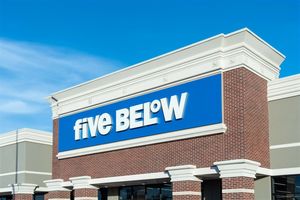
SPONSORED CONTENT -- (StatePoint) Every bladder cancer journey is different, and no single treatment or diagnostic path fits everyone. According to patients who have experienced bladder cancer, the best care for you will depend on your personal situation.
“After experiencing recurring bladder cancer, I learned that understanding my path forward meant looking beyond general statistics and seeking out more precise care based on my individual case,” says Michael F.
A More Complete Picture
Because doctors often tailor treatment decisions, it’s best that the diagnostic procedures they use give them the most complete picture possible. One option your doctor may offer is Blue Light Cystoscopy (BLC), a diagnostic procedure designed to help your urologic surgeon better visualize tumors in your bladder.
BLC involves placing a special imaging agent into the bladder at least one hour before the procedure. During the procedure, the surgeon will examine the bladder lining using regular white light, then switch on a special blue light. The imaging agent causes the tumors to glow bright pink in the special blue light. The enhanced visibility helps define the edges of visible tumors and reveals a certain type of flat, cancerous lesion that can otherwise be difficult to detect.
BLC is currently used during TURBT (transurethral resection of bladder tumor) procedures and can also be used during cystoscopies to monitor progress during surveillance visits. Your doctor might recommend BLC to provide a more detailed view of your bladder and to help gather tissue samples that can provide information that aids in diagnosis and treatment planning. Having a better understanding of the characteristics of your bladder cancer can help your doctor determine or adjust your treatment plan, and choose an appropriate follow-up approach for you.
“Once my doctors began using blue light, it became a standard part of my cystoscopies, allowing them to identify areas of concern that had not been visible before,” says Michael F.
Michael F’s recurring bladder cancer required multiple rounds of treatment, including immunotherapy, chemotherapy and eventually gene therapy. Over the course of his treatments, he underwent 10–11 cystoscopies — most of which utilized BLC to identify suspicious cells that were otherwise undetectable. “With my robust form of cancer, the enhanced cystoscopies were able to reveal suspicious cells that turned out to be pre-cancerous. This helped my care team respond faster and more efficiently,” he says.
Asking About Your Options
Your urologist will consider many factors when recommending diagnostics, and not every tool is right for every bladder cancer case. When discussing your care with your urologic surgeon, here are a few questions you might ask:
1. “Would Blue Light Cystoscopy be helpful in my case?”
2. “What are the options for getting an enhanced view of my bladder?”
3. “How do you personalize care plans for someone with my diagnosis?”
Michael F. often reminds others that statistics are general, not personal, and encourages speaking up when something doesn’t seem right. “Staying informed of your care options, as well as being honest, open and proactive with your care team throughout your bladder cancer journey can help you get precise, personalized care,” he says.
If you are interested in exploring BLC, speak with your urologist. For information about locations that offer BLC, visit https://rebrand.ly/BLClocations.
Every cancer care path is unique
— and so are the tools that may be used along the way. BLC is one diagnostic option your urologic oncologist may use to help visualize your bladder more clearly, and provide timely, tailored treatment.
Sponsored by Photocure, Inc.
*****
Photo Credit: (c) Wavebreakmedia / iStock via Getty Images Plus




